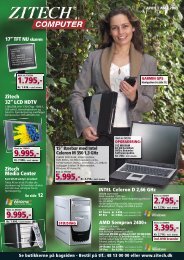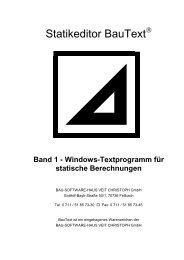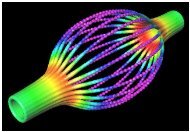Caflisch Script: a one-axis multiple master typeface
Caflisch Script: a one-axis multiple master typeface
Caflisch Script: a one-axis multiple master typeface
You also want an ePaper? Increase the reach of your titles
YUMPU automatically turns print PDFs into web optimized ePapers that Google loves.
a <strong>one</strong>-<strong>axis</strong> <strong>multiple</strong> <strong>master</strong> <strong>typeface</strong><br />
<strong>Caflisch</strong> <strong>Script</strong>
a <strong>one</strong>-<strong>axis</strong> <strong>multiple</strong> <strong>master</strong> <strong>typeface</strong><br />
<strong>Caflisch</strong> <strong>Script</strong>
Oh! Nature’s noblest gi<br />
My grey goose quill<br />
Slave of my thouhts,<br />
Obedient to my will<br />
Torn from thy parent bird<br />
To form a pen.<br />
That first mihty<br />
Instrument of all men.<br />
Lor Bron
Adobe Originals<br />
Adobe Systems introduces <strong>Caflisch</strong> <strong>Script</strong>, a new font<br />
software package in the growing library of Adobe<br />
Originals <strong>typeface</strong>s designed specifically for today’s digital<br />
technology. Adobe Originals combine the power of<br />
Adobe Post<strong>Script</strong> <strong>typeface</strong> software technology and the<br />
most sophisticated electronic design tools with the spirit<br />
of craftsmanship that has inspired type designers since<br />
Gutenberg. Comprising both new designs and revivals of<br />
classic <strong>typeface</strong>s, Adobe Originals packages set a new<br />
standard for typographic excellence.<br />
<strong>Caflisch</strong> <strong>Script</strong>, a new <strong>multiple</strong> <strong>master</strong> script <strong>typeface</strong><br />
from Adobe, allows customization of font variations for<br />
specific requirements. An enhancement of Adobe’s industry-standard<br />
Type 1 font technology, <strong>multiple</strong> <strong>master</strong><br />
<strong>typeface</strong>s add new dimensions to typographic control<br />
and flexibility. With <strong>multiple</strong> <strong>master</strong> technology, interpolation<br />
is applied in an innovative way to <strong>typeface</strong><br />
attributes, or design axes, such as weight, width, optical<br />
size, and style. <strong>Caflisch</strong> <strong>Script</strong> is a <strong>one</strong>-<strong>axis</strong> design that<br />
allows the generation of weights between light and bold.<br />
This booklet provides some background on <strong>multiple</strong><br />
<strong>master</strong> <strong>typeface</strong>s and the <strong>Caflisch</strong> <strong>Script</strong> design. It also<br />
includes samples of <strong>Caflisch</strong> <strong>Script</strong> in various text and<br />
display settings. For complete instructions on how to<br />
install <strong>multiple</strong> <strong>master</strong> <strong>typeface</strong>s on a computer and<br />
how to generate custom instances, please see the Adobe<br />
Multiple Master User Guide.
Multiple Master Typefaces<br />
These new <strong>typeface</strong>s are called “<strong>multiple</strong> <strong>master</strong>s’’<br />
because two or more sets of outlines, or <strong>master</strong> designs,<br />
are integrated into each <strong>typeface</strong>. The <strong>master</strong> designs<br />
determine the dynamic range of each design <strong>axis</strong> in a<br />
<strong>typeface</strong>, and the Post<strong>Script</strong> language enables ondemand<br />
interpolation, or generation of intermediate<br />
variations, between the <strong>master</strong> designs. For example, a<br />
light and a bold <strong>master</strong> design delineates the dynamic<br />
range of possible font variations along the weight design<br />
<strong>axis</strong>, and the user can interpolate variations anywhere<br />
within this range. The particular design axes that comprise<br />
each <strong>multiple</strong> <strong>master</strong> <strong>typeface</strong> are based on the<br />
aesthetics and potential uses of that <strong>typeface</strong>; therefore,<br />
the number of design axes and their ranges vary from<br />
<strong>one</strong> <strong>multiple</strong> <strong>master</strong> <strong>typeface</strong> to another. Some of the<br />
possible design axes include weight, width, style, and<br />
optical size.<br />
Some of the possible <strong>multiple</strong> <strong>master</strong> design axes.<br />
Dynamic range<br />
light to bold<br />
condensed to extra-extended<br />
wedge serif to slab serif<br />
6-point to 72-point (scaled to same size)<br />
Design <strong>axis</strong><br />
weight<br />
width<br />
style<br />
optical size
<strong>Caflisch</strong> <strong>Script</strong><br />
<strong>Caflisch</strong> <strong>Script</strong> is a contemporary italic script, designed<br />
by Robert Slimbach and based on the handwriting of<br />
renowned Swiss typographer Max <strong>Caflisch</strong>. At first<br />
glance, it evokes a friendly and informal quality. But<br />
closer inspection reveals that it owes its character to a<br />
seas<strong>one</strong>d craftsperson with respect for classic handwriting<br />
traditions. The <strong>typeface</strong> assumes the calligraphic<br />
flourishes of the chancery hand and transposes them into<br />
the present day. <strong>Caflisch</strong> <strong>Script</strong> speaks directly to the<br />
reader and produces striking word images that enliven<br />
any communication. It is ideal for use on its own, for<br />
informal correspondence and advertising, or in conjunction<br />
with more static types for strong contrast.<br />
The <strong>Caflisch</strong> <strong>Script</strong> Weight Axis<br />
Before <strong>multiple</strong> <strong>master</strong> technology, <strong>typeface</strong> families<br />
were limited to a fixed selection of weights. With <strong>Caflisch</strong><br />
<strong>Script</strong>, type users can fine-tune <strong>typeface</strong> weight to best<br />
suit the job at hand. The <strong>Caflisch</strong> <strong>Script</strong> weight <strong>axis</strong><br />
spans from light to bold, and works much like a pen<br />
selector. The user can choose a pen style that ranges from<br />
fine-point to broad-felt-tip.<br />
<strong>Caflisch</strong> <strong>Script</strong> Swash Capitals<br />
shown in a progression of weights,<br />
from light to bold.
Designing <strong>Caflisch</strong> <strong>Script</strong><br />
The project began when Slimbach received a handwritten<br />
note from <strong>Caflisch</strong>. The clarity and virtuosity of his script<br />
so impressed Slimbach that he considered transforming<br />
<strong>Caflisch</strong>’s handwriting style into a <strong>typeface</strong> design.<br />
Months later, during a visit to Adobe, <strong>Caflisch</strong> agreed to<br />
write out several sample pages of his handwriting for<br />
Slimbach to experiment with. From these samples, written<br />
with a fibre profipen, Slimbach enlarged and cataloged<br />
a variety of letterforms, n<strong>one</strong> of which, having been<br />
written by the human hand, were exactly the same. Eventually,<br />
he derived a working character set with several<br />
alternates. These letterforms were scanned and digitized<br />
to establish a basis for the type design.<br />
During this early phase, Slimbach worked to retain the<br />
subtleties and detailing of the original handwritten<br />
samples, while making the necessary weight, shape, and<br />
spacing adjustments so that the font would perform well<br />
in all letter combinations and join in a natural manner<br />
as a connecting script. To make <strong>Caflisch</strong> <strong>Script</strong> into a<br />
<strong>multiple</strong> <strong>master</strong> font, Slimbach used the original test<br />
weight as a basis from which to design light and bold<br />
<strong>master</strong> designs for the weight <strong>axis</strong>. Later, alternate lowercase<br />
and swash capital fonts were developed to further<br />
represent <strong>Caflisch</strong>’s handwriting and provide users with<br />
a more exuberant version of the regular design. Throughout<br />
the creative process, <strong>Caflisch</strong> reviewed test proofs and<br />
provided valuable feedback on the developing type.<br />
This collaboration produced a script face that pleased<br />
both designers.
Figure 1. A section from Max <strong>Caflisch</strong>’s handwrien pages, on which the type design<br />
was based.<br />
BB<br />
HH<br />
g <br />
kk<br />
Figure 2. A sampling of the cataloged leerforms and the finished leer designs, highlighted<br />
in color.<br />
jene Lettern lesen, die sie kannten, druckte<br />
er seine Bibel so, daß es den Anschein hatte,<br />
sie sei von Hand geschrieben. Seine Entdekkung<br />
wurde in Rom und Venedig rasch bekannt,<br />
und so entwarf man die Druck- und<br />
Figure 3. The finished <strong>typeface</strong>.
Primary Fonts<br />
A set of primary fonts is supplied with each <strong>multiple</strong><br />
<strong>master</strong> <strong>typeface</strong>, comprising a collection of ready-to-use<br />
variations of the design. In addition to the hundreds of<br />
custom fonts that can be generated along the weight<br />
<strong>axis</strong>, <strong>Caflisch</strong> <strong>Script</strong> includes four primary fonts for each<br />
of the regular, swash, and alternate fonts.<br />
Primary fonts are named according to their position<br />
along each design <strong>axis</strong> in the <strong>typeface</strong>. The <strong>Caflisch</strong><br />
<strong>Script</strong> weight <strong>axis</strong> has been assigned a specific numerical<br />
range that is relative to other Adobe <strong>multiple</strong><br />
<strong>master</strong> <strong>typeface</strong>s. Relative numeric ranges are most<br />
useful when comparing the weights of <strong>typeface</strong>s used for<br />
text composition. To maintain consistency among<br />
<strong>multiple</strong> <strong>master</strong> <strong>typeface</strong>s, this relative system has been<br />
applied to the <strong>Caflisch</strong> <strong>Script</strong> weight <strong>axis</strong>.<br />
Primary font name abbreviations<br />
Light—light<br />
Reg—regular<br />
SemBld —semibold<br />
Bold —bold<br />
Design <strong>axis</strong> abbreviation<br />
wt—weight
280 light<br />
325<br />
364<br />
406 regular<br />
440<br />
490<br />
556 semibold<br />
570<br />
584<br />
598<br />
612<br />
626<br />
640 bold<br />
rituals involving pens, ink<br />
rituals involving pens, ink<br />
rituals involving pens, ink<br />
rituals involving pens, ink<br />
rituals involving pens, ink<br />
rituals involving pens, ink<br />
rituals involving pens, ink<br />
rituals involving pens, ink<br />
rituals involving pens, ink<br />
rituals involving pens, ink<br />
rituals involving pens, ink<br />
rituals involving pens, ink<br />
rituals involving pens, ink
Handwriting<br />
For 6,000 years, man has communicated through written<br />
symbols. The evolution of handwriting, from the earliest<br />
pictograms to our current alphabet, has been driven by a<br />
quest for simplicity and efficiency. For centuries, written<br />
language has been the primary means of documenting<br />
human endeavor, affording us a window to the past.<br />
The alphabet we know today was established during<br />
the Italian Renaissance. The elegant and practical<br />
scripts of this time evolved from earlier writing systems<br />
and derived their character from the broad-edged quill<br />
(figures 4 and 6). These scripts, in all their forms, had a<br />
sweeping influence on society and led to the creation of<br />
the roman and italic letterforms that we use today.<br />
In the early 17th century, with the advent of copperplate<br />
engraving as a means of reproducing letterforms<br />
and illustrations, italic handwriting evolved to emulate<br />
the marks of the engraver’s pointed burin. The pointed<br />
quill soon replaced the broad-edged quill, giving rise to<br />
copperplate handwriting. For the next 300 years, a vari -<br />
ety of pointed-quill handwriting styles were practiced by<br />
professionals and amateurs alike (figures 10 and 11).<br />
Modern handwriting is a potpourri of styles, written<br />
with a wide variety of instruments. It is an everyday<br />
activity with results ranging from a disposable note to a<br />
fine piece of calligraphy. Whether we write in a traditional<br />
or unconventional manner, our personality, intellect,<br />
and mood shine through. However, the primary<br />
purpose of writing is communication, which requires a<br />
legible script. Fine handwriting is a craft worthy of<br />
admiration as well as a joy to read.<br />
Early Pictogram, Val Camonica
Figure 4<br />
Figure 5<br />
A comparison between the early humanistic book hand of Poggio Bracciolini, 1425<br />
(figure 4), and the first <strong>typeface</strong> used by Sweynheim and Pannartz, Subiaco, 1465<br />
(figure 5). The early printers in Italy sought to emulate the manuscripts of the time<br />
and produced <strong>typeface</strong>s modeled on humanistic writing. Photos: Biblioteca Medicea<br />
Laurenziana and The Newberry Library.<br />
Figure 6<br />
Figure 7<br />
A comparison of the formal chancery writing (figure 6) and italic <strong>typeface</strong> (figure 7) of<br />
Ludovico degli Arrighi. As <strong>one</strong> of the preeminent writing <strong>master</strong>s of the Italian Renaissance,<br />
Arrighi instilled the qualities of his written script to the medium of printing<br />
type. Photos: A royal manuscript of Collenuccio, “Apologues,” about 1520, British Library.<br />
Arrighi’s 2nd italic type of 1523, The Newberry Library.
Figure 8. The late 16th century brought Robert Granjon’s Civilité type of about 1557,<br />
which was a stylized version of a Gothic cursive hand, and used as a book type.<br />
Photo: The Newberry Library.<br />
Figure 9. A sample of three popular printing types derived from regional pointed quill<br />
scripts. Imprimerie Royale Specimen of 1819. Photo: The Newberry Library.
Figure 10. Copperplate engraving from George Bickham’s book, “The Universal Penman,”<br />
1733–1741. With copperplate engraving, leers were cut, in reverse, into a metal plate<br />
with a pointed burin. The entire plate was then inked and the surface wiped clean,<br />
leaving ink in the engraved areas for printing onto paper.<br />
Figure 11. Personal correspondence from 1819. Copperplate handwriting was wrien by<br />
professional scribes and amateurs alike using a flexible pointed quill.<br />
Figure 12. Typefaces like Thomas Corell’s double pica script of 1774 presented even<br />
skilled punchcuers with the difficult task of reproducing the natural leer joins and<br />
fine hairlines characteristic of copperplate handwriting. Photo: The British Library.
Figure 13. Examples of everyday handwriting, showing a variety of writing styles<br />
and personalities.<br />
The tools of the trade<br />
Snell Roundhand* – Mahew Carter, 1966<br />
The tools of the trade<br />
Wilhelm Klingspor Gotisch* – Rudolph Koch, 1926<br />
e tools of the trade<br />
Poetica – Robert Slimbach, 1992<br />
The tools of the trade<br />
Tekton – David Siegel, 1989<br />
The tools of the trade<br />
Mistral® – Roger Excoffon, 1955<br />
The tools of the trade<br />
Visigoth – Arthur Baker, 1988<br />
Figure 14. Contemporary digital <strong>typeface</strong>s modeled on wrien forms.
<strong>Script</strong> Typefaces<br />
Strictly speaking, a script <strong>typeface</strong> is an imitation of handwriting.<br />
It is a maer of opinion which <strong>typeface</strong>s should<br />
be classified as scripts, especially since all early type designs<br />
come from wrien forms. Today, we typically label a <strong>typeface</strong><br />
as a script if it retains the look of having been wrien<br />
with a pen or other writing implement.<br />
From Gutenberg’s Bible<br />
The first successful script <strong>typeface</strong> was cut and cast in<br />
metal by Johannes Gutenberg. He modeled it on the Gothic<br />
script of the time and used it to print his famous bibles in<br />
the 1450s. As the printed book gained acceptance throughout<br />
Europe, new <strong>typeface</strong>s were created. The most successful<br />
early designs were based on the humanistic book hands<br />
of the Italian Renaissance (figures 5 and 7).<br />
In 17th-century France, three commonly used hand -<br />
writing styles were reproduced as printing types: Ronde,<br />
a rounded upright form; and bâtarde coulée and bâtarde<br />
ordinaire, both italic forms (figure 9).<br />
The double pica script of Thomas Corell (1774) emu -<br />
lated the copperplate scripts of the time and subsequently<br />
became the prototype for similar styles of types (figure 12).<br />
Type designers such as Fournier, Fleischman, Rosart,<br />
Didot, and Bodoni transformed distinguished versions of<br />
pointed -quill scripts into the vernacular of their times<br />
by rendering them as printing type.<br />
In the 19th and 20th centuries, numerous formal and<br />
freestyle script <strong>typeface</strong>s were designed. In addition to<br />
traditional broad-edged and pointed-quill script types,<br />
brush scripts and, more recently, scripts inspired by the<br />
felt-tipped marker, pencil, ruling pen, and even the spray<br />
paint can can now be seen.
Character Samples<br />
As a typographer and leering artist, Max <strong>Caflisch</strong><br />
applies many of the stylistic variations of Renaissance<br />
handwriting and typographic protocol to his own<br />
writing. These varied characters have been organized<br />
into three separate fonts for easy use.<br />
ABCDEFGHIJKLMNOPQRS<br />
abcdefghijklmnopqrstuvw<br />
<strong>Caflisch</strong> <strong>Script</strong> contains non-swash capital, lowercase leers, and<br />
tabular figures designed for use with both upper- and lowercase.<br />
ABCDEFGHIJKLMN<br />
abcdefghijklmnopqrstuvw<br />
<strong>Caflisch</strong> <strong>Script</strong> Swash comprises swash capitals, several swash lowercase<br />
characters, and lowercase figures.<br />
chckst<br />
ffffiffl<br />
a<br />
b<br />
c<br />
d e<br />
p q r<br />
l m n o<br />
<strong>Caflisch</strong> <strong>Script</strong> Alternate contains specialized swash lowercase<br />
leerforms and several useful ligatures. The small leers below each<br />
character indicate its keyboard access position.<br />
f<br />
g<br />
h i<br />
j k
abcdefghijklmnopqrstuvwxyz<br />
abcdefghijklmnopqrstuvwxyz<br />
A comparison of the <strong>Caflisch</strong> <strong>Script</strong> and <strong>Caflisch</strong> <strong>Script</strong> Swash lowercase<br />
styles. Highlighted are the letters that differ.<br />
TUVWXYZ<br />
xyz&1234567890<br />
OPQRSTUVWXYZ<br />
xyz&1234567890<br />
Character set for <strong>Caflisch</strong> <strong>Script</strong> & <strong>Caflisch</strong> <strong>Script</strong> Swash<br />
ABCDEFGHIJKLMNOPQRSTUVWXYZabcdef<br />
ghijklmnopqrstuvwxyz&0123456789ÆŒÞÐ<br />
ŁØæœþðłøfiflßıªº¹²³$¢£¥ƒ¤/¼½¾%‰#°·^<br />
~÷¬=−+×µ.,;:!¡?¿'"‘’“”‚„-–—‹›«»()[]{}<br />
|¦/\_…†‡§*•@©®ÁÂÄÀÅÃÇÉÊËÈÍÎÏÌÑ<br />
ÓÔÖÒÕŠÚÛÜÙÝŸŽáâäàåãçéêëèíîïìñóôöòõšú<br />
ûüùýÿž´ˆ¨`˚˜¯˘˙ˇ˝˛¸<br />
Complete character set for <strong>Caflisch</strong> <strong>Script</strong> Alternate<br />
chckst<br />
ffffiffl
8.10 light<br />
To the writer’s mind, the physical act of shaping<br />
thoughts on paper has numinous overt<strong>one</strong>s.<br />
Not surprisingly, this reverence toward the<br />
mystery of the creative process permeates the<br />
tools of the trade, so that you find writers<br />
engaged in curious rituals involving pens, ink,<br />
pencils, paper, and even erasers. Some can only<br />
work with a single, charmed combination;<br />
others require different instruments for different<br />
kinds of composition. As a case in point,<br />
regular<br />
To the writer’s mind, the physical act of shaping<br />
thoughts on paper has numinous overt<strong>one</strong>s.<br />
Not surprisingly, this reverence toward<br />
the mystery of the creative process permeates<br />
the tools of the trade, so that you find writers<br />
engaged in curious rituals involving pens,<br />
ink, pencils, paper, and even erasers. Some can<br />
only work with a single, charmed combina -<br />
tion; others require different instruments for<br />
different kinds of composition. As a case in<br />
semibold<br />
To the writer’s mind, the physical act of<br />
shaping thoughts on paper has numinous<br />
overt<strong>one</strong>s. Not surprisingly, this reverence<br />
toward the mystery of the creative process<br />
permeates the tools of the trade, so that you<br />
find writers engaged in curious rituals<br />
involving pens, ink, pencils, paper, and even<br />
erasers. Some can only work with a single,<br />
charmed combination; others require different<br />
instruments for different kinds of compo-<br />
bold<br />
To the writer’s mind, the physical act of<br />
shaping thoughts on paper has numinous<br />
overt<strong>one</strong>s. Not surprisingly, this reverence<br />
toward the mystery of the creative process<br />
permeates the tools of the trade, so that you<br />
find writers engaged in curious rituals<br />
involving pens, ink, pencils, paper, and even<br />
erasers. Some can only work with a single,<br />
charmed combination; others require different<br />
instruments for different kinds of com-<br />
10.12 light<br />
To the writer’s mind, the physical act of shaping<br />
thoughts on paper has numinous overt<strong>one</strong>s. Not surprisingly,<br />
this reverence toward the mystery of the<br />
creative process permeates the tools of the trade, so<br />
that you find writers engaged in curious rituals<br />
involving pens, ink, pencils, paper, and even erasers.<br />
Some can only work with a single, charmed combination;<br />
others require different instruments for<br />
regular<br />
To the writer’s mind, the physical act of shaping<br />
thoughts on paper has numinous overt<strong>one</strong>s. Not<br />
surprisingly, this reverence toward the mystery of<br />
the creative process permeates the tools of the trade,<br />
so that you find writers engaged in curious rituals<br />
involving pens, ink, pencils, paper, and even erasers.<br />
Some can only work with a single, charmed combination;<br />
others require different instruments for<br />
semibold<br />
To the writer’s mind, the physical act of shaping<br />
thoughts on paper has numinous overt<strong>one</strong>s. Not<br />
surprisingly, this reverence toward the mystery of<br />
the creative process permeates the tools of the<br />
trade, so that you find writers engaged in curious<br />
rituals involving pens, ink, pencils, paper, and<br />
even erasers. Some can only work with a single,<br />
charmed combination; others require different<br />
bold<br />
To the writer’s mind, the physical act of shaping<br />
thoughts on paper has numinous overt<strong>one</strong>s. Not<br />
surprisingly, this reverence toward the mystery of<br />
the creative process permeates the tools of the<br />
trade, so that you find writers engaged in curious<br />
rituals involving pens, ink, pencils, paper, and<br />
even erasers. Some can only work with a single,<br />
charmed combination; others require different<br />
pens, ink, pencils
12.14 light<br />
To the writer’s mind, the physical act of shaping thoughts<br />
on paper has numinous overt<strong>one</strong>s. Not surprisingly, this<br />
reverence toward the mystery of the creative process permeates<br />
the tools of the trade, so that you find writers engaged<br />
in curious rituals involving pens, ink, pencils, paper, and<br />
even erasers. Some can only work with a single, charmed<br />
combination; others require different instruments for dif-<br />
regular<br />
To the writer’s mind, the physical act of shaping thoughts<br />
on paper has numinous overt<strong>one</strong>s. Not surprisingly, this<br />
reverence toward the mystery of the creative process permeates<br />
the tools of the trade, so that you find writers engaged<br />
in curious rituals involving pens, ink, pencils, paper, and<br />
even erasers. Some can only work with a single, charmed<br />
combination; others require different instruments for dif-<br />
semibold<br />
To the writer’s mind, the physical act of shaping<br />
thoughts on paper has numinous overt<strong>one</strong>s. Not surprisingly,<br />
this reverence toward the mystery of the creative<br />
process permeates the tools of the trade, so that you find<br />
writers engaged in curious rituals involving pens, ink,<br />
pencils, paper, and even erasers. Some can only work with<br />
a single, charmed combination; others require different<br />
bold<br />
To the writer’s mind, the physical act of shaping<br />
thoughts on paper has numinous overt<strong>one</strong>s. Not surprisingly,<br />
this reverence toward the mystery of the creative<br />
process permeates the tools of the trade, so that you find<br />
writers engaged in curious rituals involving pens, ink,<br />
pencils, paper, and even erasers. Some can only work<br />
with a single, charmed combination; others require<br />
paper, an even erasers<br />
55 pt.
14.16 light<br />
To the writer’s mind, the physical act of shaping<br />
thoughts on paper has numinous overt<strong>one</strong>s. Not surprisingly,<br />
this reverence toward the mystery of the<br />
creative process permeates the tools of the trade, so<br />
that you find writers engaged in curious rituals<br />
involving pens, ink, pencils, paper, and even erasers.<br />
regular<br />
To the writer’s mind, the physical act of shaping<br />
thoughts on paper has numinous overt<strong>one</strong>s. Not surprisingly,<br />
this reverence toward the mystery of the<br />
creative process permeates the tools of the trade, so<br />
that you find writers engaged in curious rituals<br />
involving pens, ink, pencils, paper, and even erasers.<br />
semibold<br />
To the writer’s mind, the physical act of shaping<br />
thoughts on paper has numinous overt<strong>one</strong>s. Not surprisingly,<br />
this reverence toward the mystery of the<br />
creative process permeates the tools of the trade, so<br />
that you find writers engaged in curious rituals<br />
involving pens, ink, pencils, paper, and even eras-<br />
bold<br />
To the writer’s mind, the physical act of shaping<br />
thoughts on paper has numinous overt<strong>one</strong>s. Not<br />
surprisingly, this reverence toward the mystery of<br />
the creative process permeates the tools of the<br />
trade, so that you find writers engaged in curious<br />
rituals involving pens, ink, pencils, paper, and<br />
shapin thouhts on<br />
64 pt.
18.20 light<br />
To the writer’s mind, the physical act of shaping<br />
thoughts on paper has numinous overt<strong>one</strong>s. Not<br />
surprisingly, this reverence toward the mystery of<br />
the creative process permeates the tools of the trade,<br />
so that you find writers engaged in curious rituals<br />
regular<br />
To the writer’s mind, the physical act of shaping<br />
thoughts on paper has numinous overt<strong>one</strong>s. Not<br />
surprisingly, this reverence toward the mystery of<br />
the creative process permeates the tools of the<br />
trade, so that you find writers engaged in curi-<br />
semibold<br />
To the writer’s mind, the physical act of shap -<br />
ing thoughts on paper has numinous overt<strong>one</strong>s.<br />
Not surprisingly, this reverence toward the mystery<br />
of the creative process permeates the tools of<br />
the trade, so that you find writers engaged in<br />
bold<br />
paper<br />
To the writer’s mind, the physical act of shaping<br />
thoughts on paper has numinous overt<strong>one</strong>s.<br />
Not surprisingly, this reverence toward the mystery<br />
of the creative process permeates the tools<br />
of the trade, so that you find writers engaged
24.26<br />
36.37<br />
42.43<br />
light, regular, semibold, bold<br />
To the writer’s mind, the physical act of<br />
shaping thoughts on paper has numinous<br />
overt<strong>one</strong>s. Not surprisingly, this reverence<br />
toward the mystery of the creative process<br />
light, regular, semibold, bold<br />
To the writer’s mind, the physical<br />
act of shaping thoughts<br />
on paper has numinous overt<strong>one</strong>s.<br />
Not surprisingly, this<br />
light, regular, semibold, bold<br />
To the writer’s mind, the<br />
physical act of shaping<br />
thoughts on paper has<br />
numinous overt<strong>one</strong>s.<br />
12345
13.15 regular<br />
To the writer’s mind, the physical act of shaping thoughts<br />
on paper has numinous overt<strong>one</strong>s. Not surprisingly, this<br />
reverence toward the mystery of the creative process permeates<br />
the tools of the trade, so that you find writers<br />
engaged in curious rituals involving pens, ink, pencils,<br />
paper, and even erasers. Some can only work with a single,<br />
charmed combination; others require different instruments<br />
for different kinds of composition. As a case in point,<br />
to choose the fountain pen an author must be unafraid<br />
swash regular<br />
To the writer’s mind, the physical act of shaping thoughts<br />
on paper has numinous overt<strong>one</strong>s. Not surprisingly, this<br />
reverence toward the mystery of the creative process permeates<br />
the tools of the trade, so that you find writers<br />
engaged in curious rituals involving pens, ink, pencils,<br />
paper, and even erasers. Some can only work with a single,<br />
charmed combination; others require different instruments<br />
for different kinds of composition. As a case in point,<br />
to choose the fountain pen an author must be unafraid<br />
swash regular with alternate regular<br />
To the writer’s mind, the phsical act of shapin thouhts<br />
on paper has numinous overt<strong>one</strong>s. Not surprisinly, this<br />
reverence towar the mystery of the creative process permeates<br />
the tools of the trae, so that you find writers<br />
enaed in curious rituals involving pens, in pencils,<br />
paper, and even erasers. Some can only work with a sinle,<br />
charme combination; others reuire different instruments<br />
for different inds of composition. As a case in point,<br />
to choose the fountain pen an author must be unafraid<br />
7890& 123456789070<br />
pt.
Role<br />
Call!<br />
THE COMMUNITY PLAYERS<br />
are now holding<br />
auditions for the<br />
Fall 1993 season.<br />
October 5–9 12:00–4:00<br />
call 208·995·4521
W<br />
hen are you coming up again?”<br />
asked the boy.<br />
“Not while the moon is in the<br />
sky,” replied the Sun.“We are no<br />
longer speaking. Why don’t you ask<br />
him?”<br />
4 5<br />
So the boy walked back to the<br />
top of the world, where he found<br />
the moon hanging from the stars,<br />
showing no signs of leavin.<br />
“I will not budge.” The moon<br />
was very stubborn.
MENU<br />
Soup of Spinach and Cream<br />
Tournedos with Sauce Bernaise<br />
French Beans with Sauce Poulette<br />
Salad<br />
A Variety of Cheeses<br />
Fruit Tart<br />
with Slifhtly Sour Cream<br />
Gevvey Chambertin 1939<br />
Pommard 1945<br />
Calvados
Pearl<br />
Alley<br />
Bistro<br />
Our chef, Marc<br />
Westburg, personally<br />
selects only the<br />
best ingredients for our<br />
ever-changing and<br />
innovative menu.<br />
110 PEARL ALLEY, 2nd FLOOR<br />
DOWNTOWN SANTA CRUZ<br />
tinkerton’s<br />
UpTown<br />
newsstand
Kristen Weerhahn<br />
Illustrations at the Polygon Gallery<br />
July–August, 1994<br />
Wednesday–Sunday, 1:00–4:00 pm
Carla Sandoval<br />
Director Museo Nacional<br />
Banco Centrale<br />
Bogotá, Columbia<br />
Dear Ms. Sandoval,<br />
On a recent business trip, I had the pleasure of spending several<br />
hours looking at your fine collection of pre-Columbian gold work.<br />
My company develops and sells electronic equipment for the<br />
archaeological profession, and, although I am not an expert on<br />
pre-Columbian gold work, I have absorbed quite a bit of knowledge<br />
and have been able to collect a number of pieces.<br />
While in the south wing, I noticed a double bat-head figure<br />
pendant, dated 11th to 14th century, from central Panama (no.<br />
11-38-4156). I am familiar with its style because in 1974 I purchased<br />
a single bat-head pendant (slide enclosed) that looks like<br />
it was made by the same crasperson. The overall design, texture,<br />
quality of finish, and color of the gold alloy bear an uncanny<br />
resemblance to the piece I own.<br />
I am very attached to this piece, however, I feel it is my<br />
responsiblity to offer it as a gi to the museum. Your collection is<br />
so beautifully displayed, while my piece sits in a dusty vault; it’s<br />
almost a sin. I will be in South America at the end of February<br />
and would like the opportunity to meet and show you the piece.<br />
If you are interested, please write or call at 619-438-0708. I look<br />
forward to hearing from you.<br />
Sincerely,<br />
Charles Brand<br />
Archeatronics • 472 Fifth Street • San Diego, CA 10203
Type Development at Adobe<br />
Type is developed at Adobe by a full-time staff of type<br />
designers. Each member of this group has specialized<br />
skills in type design and the use of tools needed to develop<br />
digital type. The Adobe type staff has a working relationship<br />
with many outside professionals, whose expertise<br />
represents a broad spectrum of historical, scholarly, and<br />
practical knowledge of typography and the modern<br />
graphic arts.<br />
Ex libris<br />
Anne Zilver<br />
E X L I B R I S<br />
V E R A R A N D
Max <strong>Caflisch</strong> began his distinguished typographic career<br />
as a compositor. He later worked as a typographic designer<br />
for several printing firms, assisting Jan Tschihold and<br />
Imre Reiner for three of those years. From 1943 to 1962, he<br />
was art director of Benteli AG in Berne–<strong>one</strong> of the leading<br />
printing and publishing firms in Switzerland. It was<br />
during this time, in 1952, that the Bauer Type Foundry<br />
released his Columna <strong>typeface</strong> design. In 1963, <strong>Caflisch</strong><br />
began teaching at the School of Arts and Cras in Zurich,<br />
where he was managing director of the graphics department<br />
until 1981. From 1963 until 1978, he also taught at<br />
Zurich’s School for Graphic Techniques. <strong>Caflisch</strong> has<br />
received numerous awards for book design, mounted<br />
many solo exhibits of his work, and authored several publications<br />
on typography.<br />
Robert Slimbach, who joined Adobe’s type staff in 1987,<br />
began working seriously on type and calligraphy four<br />
years earlier in the type drawing department of Autologic<br />
in Newbury Park, California. Since then, Slimbach<br />
has concentrated primarily on designing text faces for<br />
digital technology. He has designed <strong>typeface</strong>s for the<br />
International Typeface Corporation as well as the Adobe<br />
Originals <strong>typeface</strong> families Adobe Garamond , Minion ,<br />
Minion <strong>multiple</strong> <strong>master</strong>, Minion Cyrillic, Poetica,<br />
Sanvito , Utopia , and Myriad (co-designed with Carol<br />
Twombly). In 1991, he received the Charles Peignot<br />
Award from Association Typographique Internationale<br />
for excellence in type design.
Further Reading<br />
Fairbank, Alfred. “A Book of <strong>Script</strong>s.” London: Faber &<br />
Faber, 1977.<br />
Fairbank, Alfred and Berthold Wolpe. “Renaissance<br />
Handwriting: An Anthology of Italic <strong>Script</strong>s.” London:<br />
Faber & Faber, 1960.<br />
Gray, Nicolete. “A History of Lettering: Creative Experi -<br />
ment & Letter Identity.” Boston: David R. Godine, 1986.<br />
Specimen book produced by<br />
Fred Brady, Manger of New<br />
Typographic Development<br />
Molly Detwiler, Editor<br />
Robert Slimbach, Type Designer<br />
Laurie Szujewska, Art Director<br />
James Young, Designer<br />
Sample art designed by<br />
Jocelyn Bergen<br />
Brian Biggs<br />
Fred Brady<br />
Max <strong>Caflisch</strong><br />
James Young<br />
Photo of Max <strong>Caflisch</strong> by Lance<br />
Hidy. Photo of Robert Slimbach by<br />
Curtis Fukuda. Gallery Illustra -<br />
tion by Kristen Wetterhahn.<br />
Special thanks to Diane Dougherty<br />
for applying her technical expertise<br />
to production and post-produc -<br />
tion issues, and to Lynn Ruggles,<br />
who gave us access to her personal<br />
library.<br />
This book was produced with<br />
Adobe Illustrator and Adobe<br />
Photoshop software and the<br />
following <strong>typeface</strong>s from the Adobe<br />
Type Library: <strong>Caflisch</strong> <strong>Script</strong>, Snell<br />
Roundhand, Wilhelm Klingspor<br />
Gotisch, Poetica, Tekton, Mistral,<br />
Visigoth, and Minion Multiple<br />
Master. The paper is Mohawk<br />
Superfine. Printing is by West<br />
Coast Litho, Mountain View,<br />
California.<br />
Adobe, the Adobe logo, Adobe<br />
Garamond, Adobe Illustrator,<br />
Adobe Originals, the Adobe<br />
Originals logo, Adobe Photoshop,<br />
<strong>Caflisch</strong> <strong>Script</strong>, Minion, Myriad,<br />
Poetica, Post<strong>Script</strong>, Sanvito, Tekton<br />
and Utopia are trademarks of<br />
Adobe Systems Incorporated which<br />
may be registered in certain jurisdictions.<br />
Snell Roundhand and<br />
Wilhelm Klingspor Gotisch are<br />
trademarks of Linotype-Hell AG<br />
and/or its subsidiaries. Mistral is<br />
a registered trademark of Marcel<br />
Olive. Visigoth is a trademark of<br />
AlphaOmega Typography.<br />
Copyright © 1993 Adobe Systems<br />
Incorporated. All rights reserved.
Adobe<br />
<br />
Adobe Systems Incorporated<br />
1585 Charleston Road<br />
Mountain View, California 94043<br />
USA<br />
Adobe Systems Japan<br />
Swiss Bank House<br />
4-1-8 Toranomon, Minato-ku<br />
Tokyo 105 Japan<br />
Adobe Systems Europe B.V.<br />
Europlaza<br />
Hoogoorddreef 54a<br />
1101 BE Amsterdam Z.O.<br />
The Netherlands<br />
Adobe Systems U.K. Limited<br />
10 Princeton Mews<br />
167-169 London Road<br />
Kingston-upon-Thames<br />
Surrey KT2 6PT<br />
United Kingdom<br />
Adobe Systems GmbH<br />
Carl-Zeiss-Ring 11<br />
D-85737 Ismaning<br />
Germany<br />
Adobe Systems AB<br />
Business Campus<br />
Oxfordhuset<br />
Johanneslundsvägen 2<br />
194 81 Upplands Väsby<br />
Sweden<br />
Adobe Systems France<br />
Le Michel Ange<br />
17-19, boulevard du Mont d’Est<br />
93192 Noisy le Grand Cedex<br />
France<br />
$15 0399 2061 (11/93)


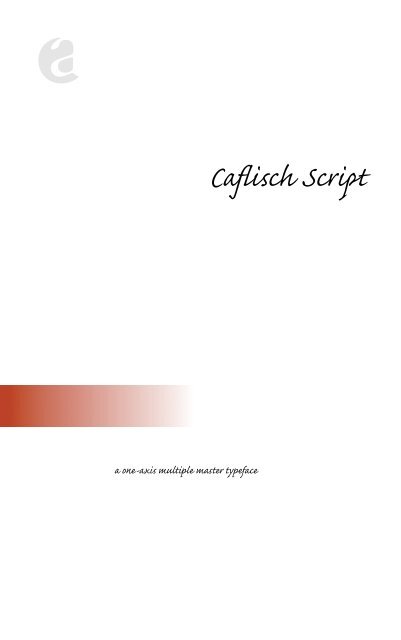
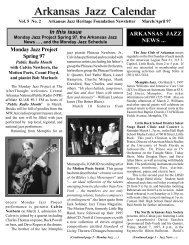
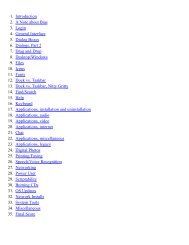
![JavaScript API [callas Intranet] - Adobe Acrobat Engineering](https://img.yumpu.com/12380587/1/184x260/javascript-api-callas-intranet-adobe-acrobat-engineering.jpg?quality=85)
